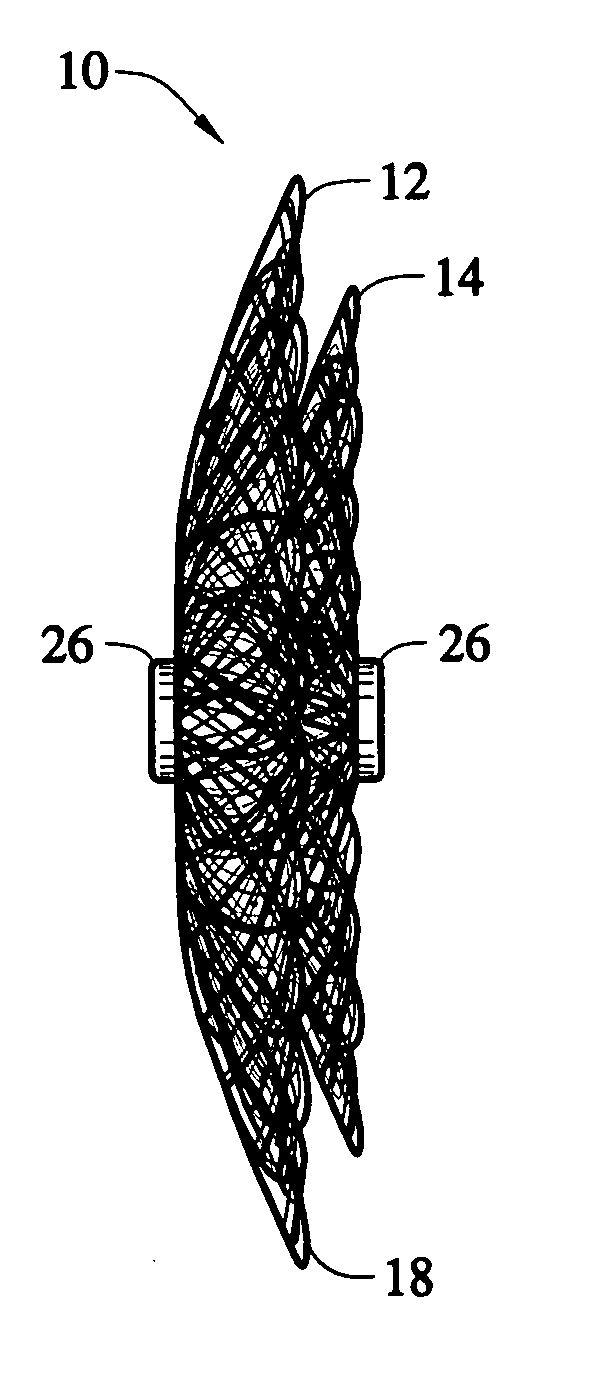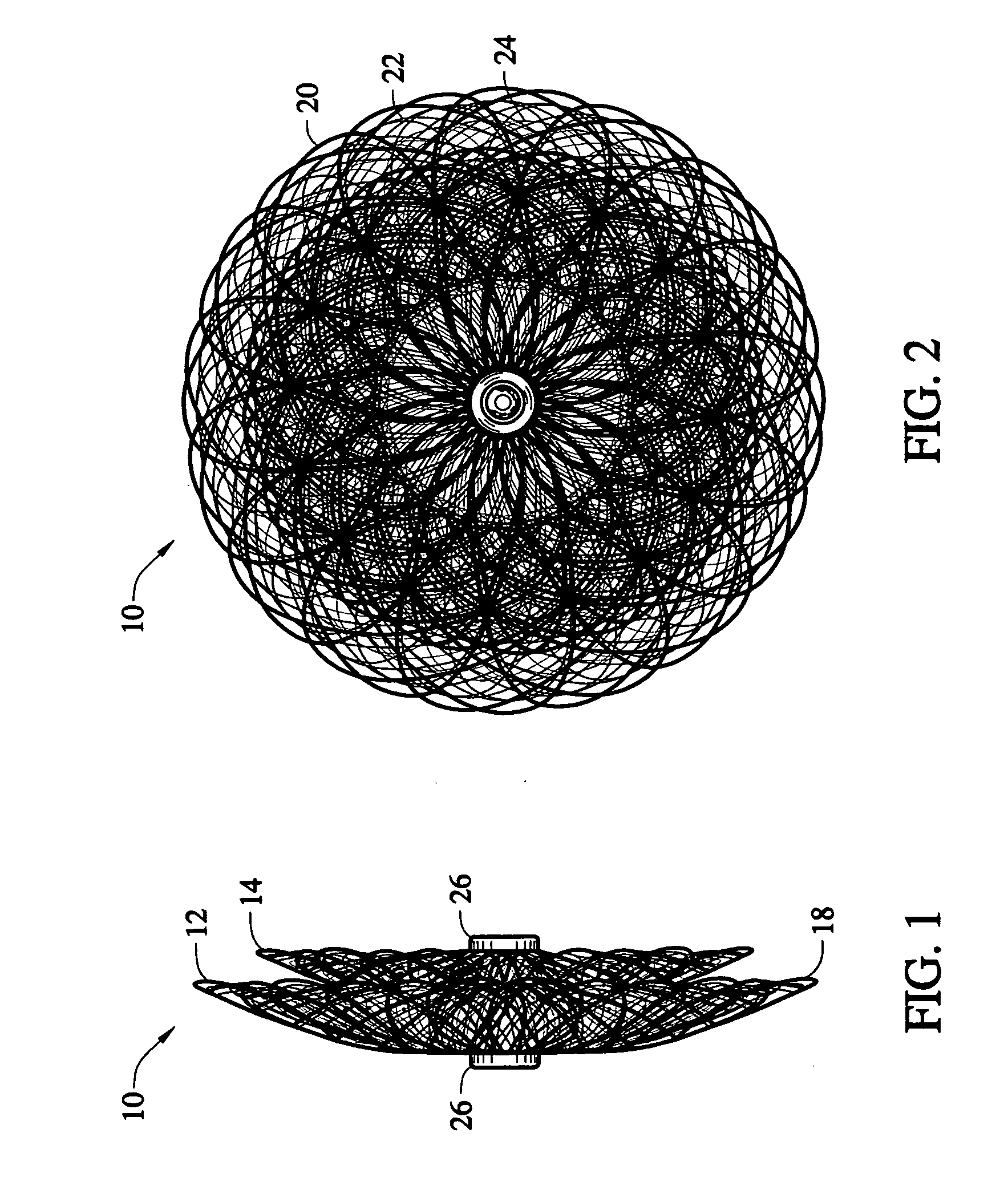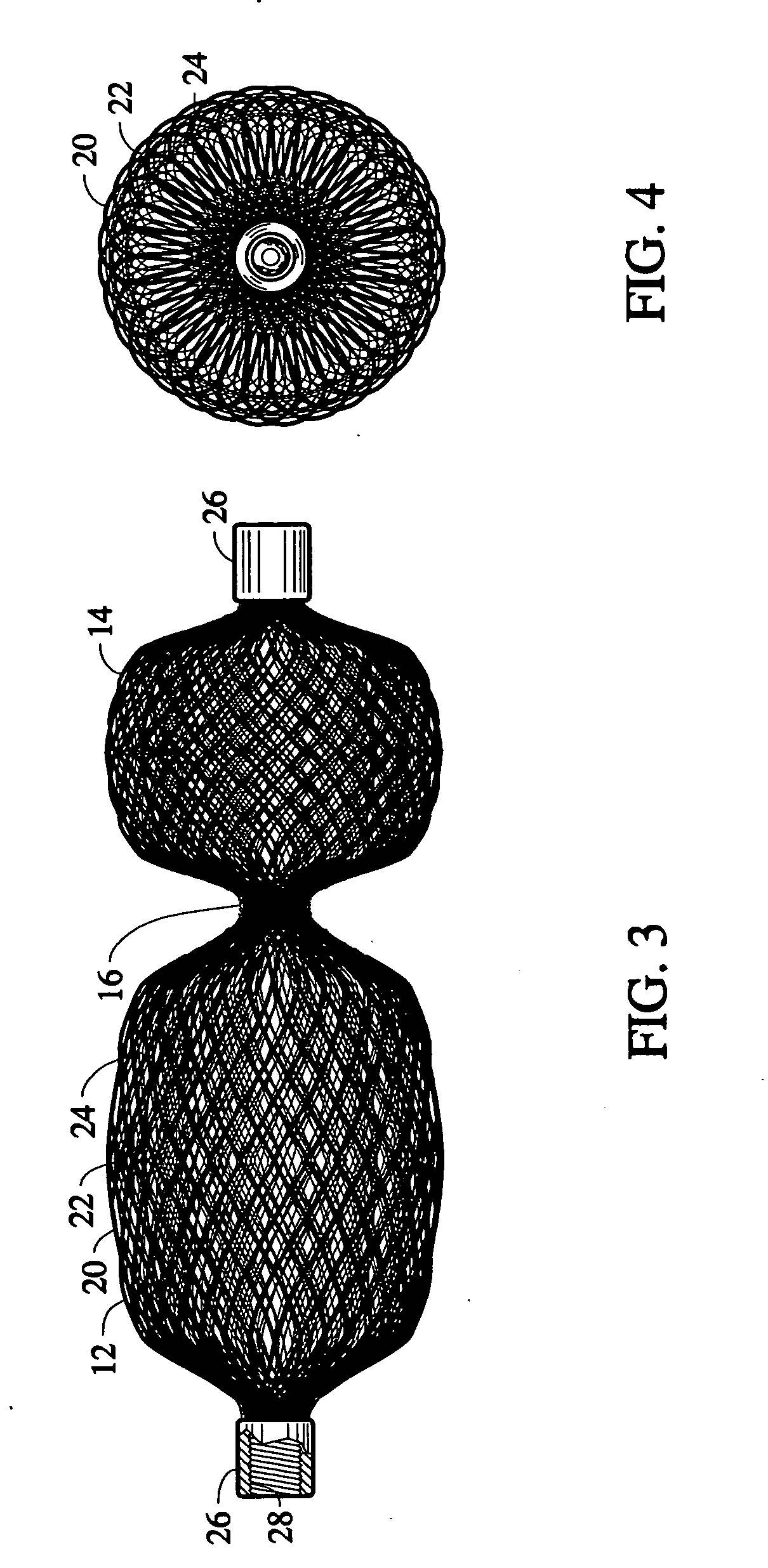Multi-layer braided structures for occluding vascular defects
- Summary
- Abstract
- Description
- Claims
- Application Information
AI Technical Summary
Benefits of technology
Problems solved by technology
Method used
Image
Examples
Embodiment Construction
[0027] The present invention provides a percutaneous catheter directed occlusion device for use in occluding an abnormal opening in a patients' body, such as an Atrial Septal Defect (ASD), a ventricular septal defect (VSD), a Patent Ductus arteriosus (PDA), a Patent Foramen Ovale (PFO), and the like. It may also be used in fabricating a flow restrictor or an aneurysm bridge or other types of occluders for placement in the vascular system. In forming a medical device, via the method of the invention, a planar or tubular metal fabric is provided. The planar and tubular fabrics are formed of a plurality of wire strands having a predetermined relative orientation between the strands. The tubular fabric has metal strands which define two sets of essentially parallel generally helical strands, with the strands of one set having a “hand”, i.e. a direction of rotation, opposite that of the other set. This tubular fabric is known in the fabric industry as a tubular braid.
[0028] The pitch of...
PUM
 Login to View More
Login to View More Abstract
Description
Claims
Application Information
 Login to View More
Login to View More - R&D
- Intellectual Property
- Life Sciences
- Materials
- Tech Scout
- Unparalleled Data Quality
- Higher Quality Content
- 60% Fewer Hallucinations
Browse by: Latest US Patents, China's latest patents, Technical Efficacy Thesaurus, Application Domain, Technology Topic, Popular Technical Reports.
© 2025 PatSnap. All rights reserved.Legal|Privacy policy|Modern Slavery Act Transparency Statement|Sitemap|About US| Contact US: help@patsnap.com



